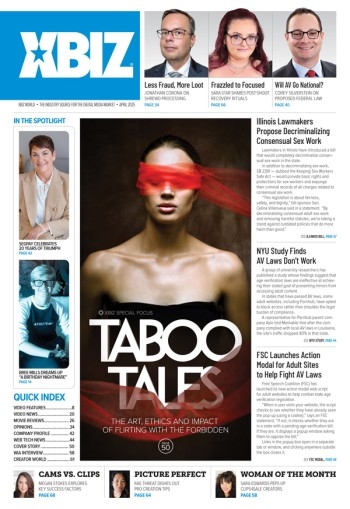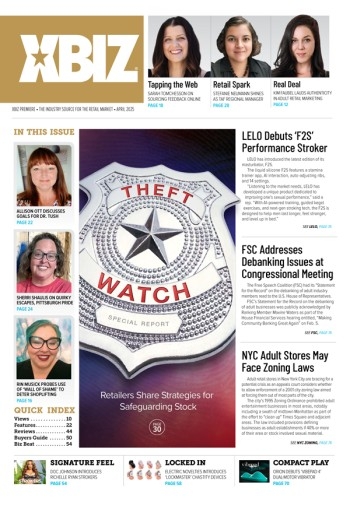After carrying the sex furniture throughout the film, Clooney’s sex-crazed character caused quite a buzz around the item. For viewers, the Liberator provided a laugh or two, but for manufacturer OneUp Innovations, it was a product placement worth its weight in gold.
After the film came out, we had hundreds of pages of press internationally,” OneUp Innovations founder and CEO Louis Friedman said. “We did a TV show in Japan because the producers wanted the purple ramp that Clooney had. So I don’t know what the end result of the placement will be but just the publicity and the association with Clooney alone is incredible. Right now, the movie has made $130 million, which means that hundreds of thousands of people have watched Clooney carry our product and laughed with it. That has so much intrinsic value that is almost immeasurable.”
It’s all thanks to the product placement phenomenon, a form of advertising that has been around for decades, but recently has become an essential branding tool. With increased DVD and TiVo use, companies have to work beyond the traditional 30-second commercial spot to get their products in the eyes of the consumer.
For Friedman, the Liberator wasn’t just a simple placement in “Burn After Reading” — it was a supporting character.
“The way that placements typically work is someone, say a [studio’s] prop master, is looking for a computer or car, they would put it out for bid and pay an agency typically per minute for using the product,” Friedman said. “The unique placement is when the writer conceives it and writes into the script because he/she feels it is essential to the character. In that sense, it almost becomes a fellow cast member.”
Because the Coen Brothers wrote their script with the intention of using the Liberator Ramp, OneUp Innovations didn’t have to pay a penny.
A product being written into a script isn’t rare, but oftentimes doesn’t make a difference, said Nathan Graham, who works in the feature production department for a major Hollywood studio. What does matter is how much a given company bids for integration. So just because a writer mentions a specific brand, doesn’t mean it makes final cut, he said.
The majority of the time, the process is quite simple. When a studio receives a script for a film, staff read it to find opportunities to integrate products into the plot. Then the studio often sends the scripts to various agencies that represent larger brands, such as Mercedes or Tiffany & Co., to find out if they see any placement opportunities they missed and/or which of their clients they feel are good fits for the various opportunities. Then the real negotiating begins.
Graham said most placements are done through a barter system, in which a company provides products free of charge for a possible spot in a film or TV show. Bigger deals happen when a company offers the studio money to guarantee its product a bigger role. These deals are usually referred to as paid integrations and typically, the larger the donation, the better the guarantee that a product will be front and center.
What all product placement comes down to, however, is the amount of interest both the studio and the product’s company is in a particular film or TV show, Graham said. Car companies might be willing to dish out big bucks to be Bruce Wayne’s go-to car, but could care less about a small independent film that will only be released in a few thousand theaters.
Using sex toys as product placements in mainstream entertainment only started fairly recently, said Fifteen Minutes PR rep Ryan Croy, who represents Doc Johnson.
“Adult products are definitely more commonplace in TV and film now as opposed to a decade ago,” Croy said. “Once the ladies of Sex and the City, with their legions of loyal followers, made it chic to own toys, novelties entered the mainstream lexicon in a whole new light. Even mainstream network TV has given the industry exposure.”
Croy has helped place Doc Johnson products in films such as “Harold and Kumar Escape From Guantanamo Bay.
“Doc Johnson, for instance, has recently been involved with a network sitcom, which we’ll soon make an announcement about over the upcoming weeks,” Croy said. “This type of opportunity simply did not exist until only recently.”
While there is no true science to integrating adult novelties in TV or film, the results are clear, Croy said.
“I think every time a prime time show incorporates novelties into a scene, it’s a coup for the entire industry. As these walls continue to come down, more opportunities will surface,” Croy said. “The more people are exposed to adult product, the less it exists as taboo in their eyes. If they can watch a network TV show where a sex product is featured front and center and have a good laugh, chances are their interest might be piqued to learn more, or they may even go make a purchase they otherwise wouldn’t.”
It was Fleshlight’s one-of-akind design that landed the company a mention in director Kevin Smith’s “Zach and Miri Make A Porno,” said Chris Marcus, Fleshlight’s vice president of business development. Similar to what happened for OneUp’s Liberator Ramp, the Fleshlight was written into the script — the company didn’t need to even persuade them to use it.
Their secret? Building a strong and recognizable brand is the key to getting your product in the eyes and minds of directors, producers and prop masters, Marcus said.
“We didn’t even know that we were going to be mentioned in the film,” he said. “We weren’t upset at all that they hadn’t contacted us — we were thrilled. While I don’t think product placement is the best way to market to consumers, it is an added benefit. In our case, it provided free exposure to the mainstream market. It reaches the market difficult to reach with traditional adult advertisers. Not everyone out there is looking at adult content sites. There is a whole other group that would go see ‘Zach and Miri’ but haven’t seen the Fleshlight because we don’t advertise on the sites they visit.”
Product placement is a win/win situation for both parties involved, said Tricia Devereaux, publicist for adult studio Evil Angel. The production company starting incorporating product placement in their films back in 2002 when they purchased several of product manufacturer Stockroom’s hand-made fetish items for its “Fashionistas” sequel. Since then, Evil Angel used Stockroom goods in more in more of its films to help offset the cost of production.
“Product placement not only alleviates our budget but it also works great for cross promotion,” Devereaux said. “When you use a specific toy brand in a film, the toy company will promote their band along with your project. It also provides the ease of not having to go into an adult store and sometimes, companies will provide you products before they are even on the shelves, so you get an exclusive edge.”
Although pitches are turned down often and it is still somewhat of an uphill battle to get adult novelties into mainstream entertainment, having a sense of humor is definitely in the industry’s favor.
“Most companies are very controlling about how their products are viewed by the public, which often leads to lucrative deals falling apart,” Graham said. “The fact that most adult companies are OK with their products being laughed at by the public opens up a lot more opportunities for them being placed in mainstream films.”







